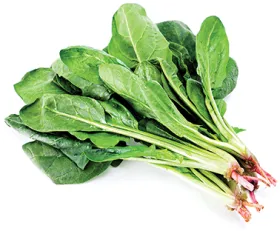The most common insect pests of leafy greens include aphids, slugs and flea beetles. Aphids, sometimes referred to as plant lice, have piercing-sucking mouthparts that are used to suck plant juices. A high-pressure spray of water will knock the aphids off the plant. Alternatively, insecticidal soaps may be used. Be sure to follow the labeled instructions.
Slugs are a soft-bodied mollusk that resembles a snail without a shell. They can be controlled by raking up plant debris and avoiding overly moist conditions in the garden.
Trapping using boards can be an effective control method. Trapping involves laying a board or shingle on the soil to provide shelter for slugs. In the morning, lift the board and kill the slugs that are taking refuge under the board by crushing them or placing them in a bucket of soapy water.
Flea beetles are ⅛-inch-long black beetles that chew small pits and holes in plants and give them a shot-hole appearance. Seedling plants are most susceptible to flea beetle infestations. Flea beetles can be controlled by using row covers to exclude the beetles from feeding on the foliage. Row covers should be installed right after seeding or transplanting.
Common insect pests that feed on kale include the imported cabbageworm (Pieris rapae) and the cabbage looper (Trichloplusia ni). The imported cabbageworm adults are the familiar white moths that flutter around cole crops such as kale, cabbage and broccoli.
The caterpillar larvae are green and can grow to be 1 inch long. The voracious caterpillars are a serious pest of cole crops. Cabbage loopers are pale green and lack legs in the middle of their bodies. As a result, they move with a familiar looping motion.
Floating row covers can exclude adult moths from laying their eggs on cole crops. Alternatively, the imported cabbageworm and the cabbage looper larvae can be treated with a soil-borne bacterium called Bacillus thuringiensis (Bt). This is an organic pesticide that specifically targets the larvae of moths. Bt works best when the larvae are smaller. Good coverage of the leaves is essential.






